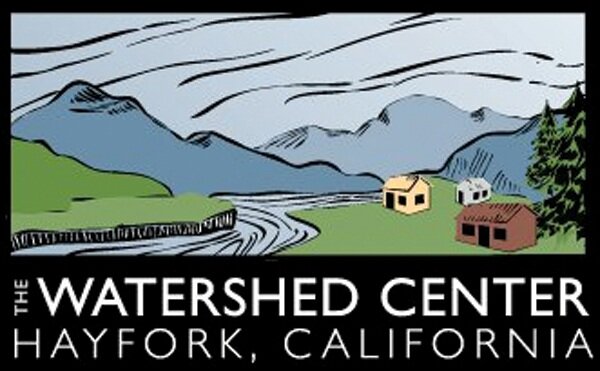Priority Beneficial Fire Projects Accomplished Across Trinity County
Beneficial fire is a dynamic land management tool whose effective use depends on weather and fuel conditions, as well as resource availability. WRTC’s Fire Management Team always prioritizes safety as the primary objective and all of our burns comply with CAL FIRE regulations and North Coast Unified Air Quality Management District permitting.
The WRTC fire team believes that fire is for everyone, regardless of one’s age, physical ability, land ownership status, or experience level. We work to provide access for all people to engage in beneficial fire work. This fall and winter, the efforts of our local fire management partnership yielded over 1,000 acres of beneficial fire on private and public land in Trinity County.
Autumn 2024 was an especially productive prescribed burn window for the Watershed Center Fire Management team! An unusually wet storm in August dropped an inch of rain on Trinity County, making it possible to safely burn in mid-September, in addition to the typical October and November burn windows.
Photo captured by Erin Banwell.
This fall, we hosted a total of 16 broadcast burn implementation days in Hayfork, Hyampom and Weaverville. We burned 270 acres (240 on private land, and 30 acres of Shasta-Trinity National Forest in the Weaver Basin). We also conducted 14 pile burn days in November and December, totalling an additional 274 acres of private lands treated with fire.
In January 2025, WRTC, Hayfork VFD and Hyampom VFD personnel assisted the Shasta-Trinity National Forest with 5 days of pile burning, accomplishing another 471 acres. It’s been an excellent season for beneficial fire!
In addition to conducting local burns, the Watershed Center’s Fire Management Team provides training (in Trinity County and across California) to build the skills and partnerships communities need to use beneficial fire. Every year we train hundreds of people over the course of thousands of hours in an effort to increase the capacity of Californians to safely work with fire. Increasing access to training and dramatically increasing the number of people who are able to safely work with fire is one of the core strategies the state is pursuing in order to manage the wildfire crisis. By restoring fire to fire-dependent ecosystems and the people who live in them, we will bring systems back into balance–reducing catastrophic wildfire, increasing biodiversity, and keeping communities safer.
Photo captured by Tyler Rowe, local prescribed fire volunteer.
The Watershed Center is proud to be partnering with state agencies and local communities to advance beneficial work.
In addition to our 8 full-time fire team members, many Watershed Center employees from other divisions have been trained to participate in prescribed burns. These in-house resources, along with our many local partners in the Trinity Integrated Fire Management Partnership (TIFMP), enable us to safely bring beneficial fire to communities. The multi-organizational TIFMP includes over 80 qualified wildland firefighters who are trained annually by the Watershed Center to work with fire on private and public lands. These personnel are in addition to government agency fire staff. Partners in the TIFMP currently include:
CAL FIRE
Hayfork VFD
Hyampom VFD
Natural Resources Conservation Service
Shasta-Trinity National Forest
Trinity County Resource Conservation District
Volunteer Community Members
Watershed Research and Training Center
We were also joined by regional partners Big Chico Creek Ecological Reserve and Kettenpom Zenia VFD this fall, along with numerous local volunteers and Prescribed Burn Association members from across the state to accomplish our burns.
Photo captured by Erin Banwell.
Together with our partners we are making progress on our vision–toward a future where more people know how to use fire to take care of the land and their communities and are empowered to act. If you want to get involved in beneficial fire in Trinity County, contact fireoperations@thewatershedcenter.com.
Funding for the burns described in this article was provided by the California Department of Forestry and Fire Protection as part of the California Climate Investments Program, the USDA US Forest Service Community Wildfire Defense Grant Program, and Shasta-Trinity National Forest. In accordance with Federal law and U.S. Department of Agriculture policy, this institution is prohibited from discriminating on the basis of race, color, national origin, sex, age, or disability.
The cover photo for this blog was captured by Erin Banwell, Co-Director of the Watershed Center Fire Management Team.



